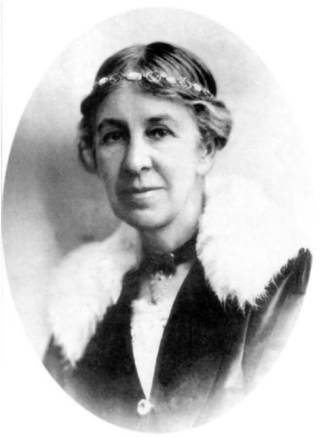This article has multiple issues. Please help improve it or discuss these issues on the talk page . (Learn how and when to remove these template messages)
|
"A Beautiful Prayer" is the best-known work of Nauruan poet Joanne Gobure.
This article has multiple issues. Please help improve it or discuss these issues on the talk page . (Learn how and when to remove these template messages)
|
"A Beautiful Prayer" is the best-known work of Nauruan poet Joanne Gobure.
The poem shows the influence of Christian, particularly Biblical, theology, and a certain maturity of outlook, given the youth of the writer. It testifies to the writer's evident meditation on the 15th chapter of the Gospel of John, on the 8th chapter of Paul's Epistle to the Romans, and to her experience of life.
It is composed mainly of similar, recurring stanzas, principally consisting of the writer's faith dialogue and the witness to her growth in spiritual understanding, in response to her various prayer petitions.
The second stanza raises an issue commanding practical human and family interest: the challenge posed to parents by, but also the prior importance of the spiritual wholeness of, children with disabilities: 'I asked God to make my handicapped child whole'. The poet subsequently attributes to God a growing appreciation of the primacy, and possibility, of her disabled child's spirit being whole: 'His spirit is whole, his body is only temporary'.
The final lines of the poem differ somewhat from the preceding stanzas, and arguably even move beyond the strict theme of prayer: 'To the world you might be one person, But to one person you just might be the world.' In terms of broader thematic parallels, such a play on the words 'one person' and 'world' can be compared with the notion of microcosm in universality, which also expresses something of the cultural contribution of, and human interest in, the small nation of Nauru. The personhood / world dichotomy, pithily expressed here by Gobure, is also a theme taken up in writing commanding universal interest. The Evangelist John's words are apposite: 'He came into the world, and the world was made by him, and the world knew him not.' (John 1.10)
The simplicity of this young Nauruan writer's poem thus echoes themes in world literature in a striking manner in which comparativists in the school of Lionel Trilling and others will be able to identify.
Some literary critics who see secular humanism in terms of the very nature of things would also discount the relevance of the religious imagery in this contemporary poem of Gobure. Others would recall the religious background of Nauruan society with which Gobure is identified.

Unity is a spiritual organization founded by Charles and Myrtle Fillmore in 1889. It grew out of Transcendentalism and became part of the New Thought movement. Unity may be best known for its Daily Word devotional publication begun in 1924. Originally based in Christianity with emphasis on the Bible, Unity more recently has said it offers "positive, practical Christianity" and describes itself as "for people who might call themselves spiritual but not religious."

Dagr is the divine personification of the day in Norse mythology. He appears in the Poetic Edda, compiled in the 13th century from earlier traditional sources, and the Prose Edda, written in the 13th century by Snorri Sturluson. In both sources, Dagr is stated to be the son of the god Dellingr and is associated with the bright-maned horse Skinfaxi, who "draw[s] day to mankind". Depending on manuscript variation, the Prose Edda adds that Dagr is either Dellingr's son by Nótt, the personified night, or Jörð, the personified Earth. Otherwise, Dagr appears as a common noun simply meaning "day" throughout Old Norse works. Connections have been proposed between Dagr and other similarly named figures in Germanic mythology.

Pearl is a late 14th-century Middle English poem that is considered one of the most important surviving Middle English works. With elements of medieval allegory and from the dream vision genre, the poem is written in a North-West Midlands variety of Middle English and is highly—though not consistently—alliterative; there is, among other stylistic features, a complex system of stanza-linking.

Evelyn Underhill was an English Anglo-Catholic writer and pacifist known for her numerous works on religion and spiritual practice, in particular Christian mysticism. Her best-known work is Mysticism, published in 1911.

Christian mysticism is the tradition of mystical practices and mystical theology within Christianity which "concerns the preparation [of the person] for, the consciousness of, and the effect of [...] a direct and transformative presence of God" or Divine love. Until the sixth century the practice of what is now called mysticism was referred to by the term contemplatio, c.q. theoria, from contemplatio, "looking at", "gazing at", "being aware of" God or the Divine. Christianity took up the use of both the Greek (theoria) and Latin terminology to describe various forms of prayer and the process of coming to know God.

"Ode to the West Wind" is an ode, written by Percy Bysshe Shelley in 1819 in Cascine wood near Florence, Italy. It was originally published in 1820 by Charles Ollier in London as part of the collection Prometheus Unbound, A Lyrical Drama in Four Acts, With Other Poems. Perhaps more than anything else, Shelley wanted his message of reform and revolution spread, and the wind becomes the trope for spreading the word of change through the poet-prophet figure. Some also believe that the poem was written in response to the loss of his son, William in 1819. The ensuing pain influenced Shelley. The poem allegorises the role of the poet as the voice of change and revolution. At the time of composing this poem, Shelley without doubt had the Peterloo Massacre of August 1819 in mind. His other poems written at the same time—"The Masque of Anarchy", Prometheus Unbound, and "England in 1819"—take up these same themes of political change, revolution, and role of the poet.
Edward Taylor was a colonial American poet, pastor and physician of English origin. His work remained unpublished for some 200 years but since then has established him as one of the foremost writers of his time. His poetry has been characterized as "American Baroque" as well as Metaphysical.
Joanne Ekamdeiya Gobure is a Nauruan poet.

Frances Ridley Havergal was an English religious poet and hymnwriter. Take My Life and Let it Be and Thy Life for Me are two of her best known hymns. She also wrote hymn melodies, religious tracts, and works for children. She did not occupy, and did not claim for herself, a prominent place as a poet, but she carved out a niche for herself.

"Hymn to Intellectual Beauty" is a poem written by Percy Bysshe Shelley in 1816 and published in 1817.
"Prayer Before Birth" is a poem written by the Irish poet Louis MacNeice (1907–1963) at the height of the Second World War. Written from the perspective of an unborn child, the poem expresses the author's fear at what the world's tyranny can do to the innocence of a child and blames the human race for the destruction that was gripping the world at the time.
Catholic spirituality includes the various ways in which Catholics live out their Baptismal promise through prayer and action. The primary prayer of all Catholics is the Eucharistic liturgy in which they celebrate and share their faith together, in accord with Jesus' instruction: "Do this in memory of me." The Catholic bishops at the Second Vatican Council decreed that "devotions should be so drawn up that they harmonize with the liturgical seasons, accord with the sacred liturgy, are in some fashion derived from it, and lead the people to it, since, in fact, the liturgy by its very nature far surpasses any of them." In accord with this, many additional forms of prayer have developed over the centuries as means of animating one's personal Christian life, at times in gatherings with others. Each of the religious orders and congregations of the Catholic church, as well as lay groupings, has specifics to its own spirituality – its way of approaching God in prayer to foster its way of living out the Gospel.
This is a glossary of spirituality-related terms. Spirituality is closely linked to religion.

"Ode: Intimations of Immortality from Recollections of Early Childhood" is a poem by William Wordsworth, completed in 1804 and published in Poems, in Two Volumes (1807). The poem was completed in two parts, with the first four stanzas written among a series of poems composed in 1802 about childhood. The first part of the poem was completed on 27 March 1802 and a copy was provided to Wordsworth's friend and fellow poet, Samuel Taylor Coleridge, who responded with his own poem, "Dejection: An Ode", in April. The fourth stanza of the ode ends with a question, and Wordsworth was finally able to answer it with seven additional stanzas completed in early 1804. It was first printed as "Ode" in 1807, and it was not until 1815 that it was edited and reworked to the version that is currently known, "Ode: Intimations of Immortality".
Little Gidding is the fourth and final poem of T. S. Eliot's Four Quartets, a series of poems that discuss time, perspective, humanity, and salvation. It was first published in September 1942 after being delayed for over a year because of the air-raids on Great Britain during World War II and Eliot's declining health. The title refers to a small Anglican community in Little Gidding in Huntingdonshire, established by Nicholas Ferrar in the 17th century and scattered during the English Civil War.

The Sidney or Sidneian Psalms are a 16th-century paraphrase of the Psalms in English verse, the work of Philip and Mary Sidney, aristocratic siblings who were influential Elizabethan poets. Mary Sidney completed them some time after the death of her brother in 1586 and presented a copy to Queen Elizabeth I of England in 1599. The translation was praised in the work of John Donne.

A Song Flung Up to Heaven is the sixth book in author Maya Angelou's series of autobiographies. Set between 1965 and 1968, it begins where Angelou's previous book All God's Children Need Traveling Shoes ends, with Angelou's trip from Accra, Ghana, where she had lived for the past four years, back to the United States. Two "calamitous events" frame the beginning and end of the book—the assassinations of Malcolm X and Martin Luther King Jr. Angelou describes how she dealt with these events and the sweeping changes in both the country and in her personal life, and how she coped with her return home to the U.S. The book ends with Angelou at "the threshold of her literary career", writing the opening lines to her first autobiography, I Know Why the Caged Bird Sings.

Njanji Soenji is a 1937 poetry collection by Amir Hamzah. Written some time after the poet was forced to marry the daughter of the Sultan of Langkat instead of his chosen love in Java, this collection consists of 24 titled poems and pieces of lyrical prose, none of which are dated. First published in the magazine Poedjangga Baroe, the collection has been republished as a stand-alone book several times.

Marcia Falk is a poet, liturgist, painter, and translator who has written several books of poetry and prayer.
Collection of Poems. 1889–1903 is the first book of poetry by Zinaida Gippius which collected 97 of her early poems. It was published in October 1903 by the Scorpion Publishing house.